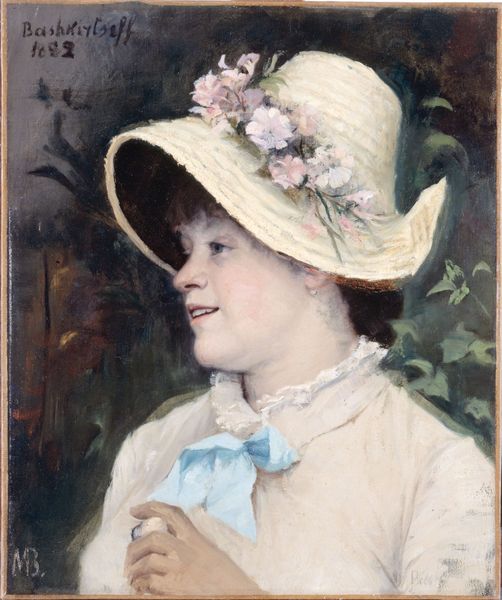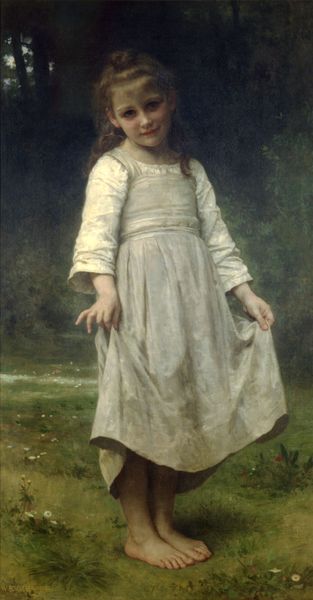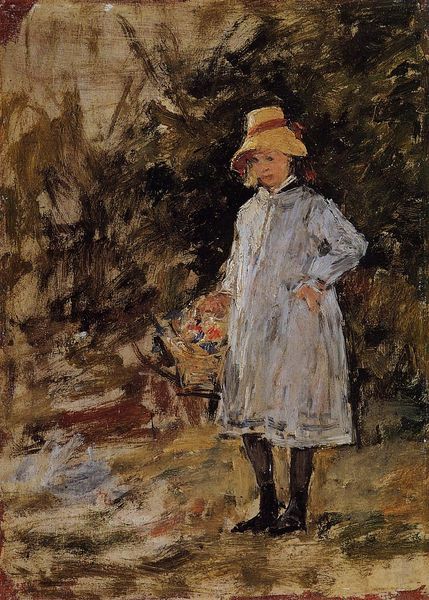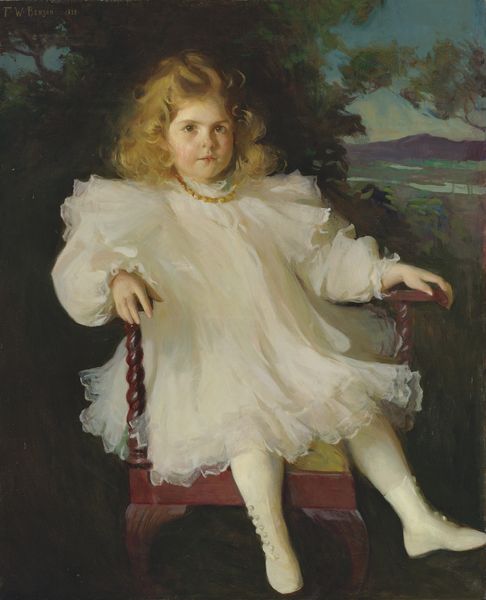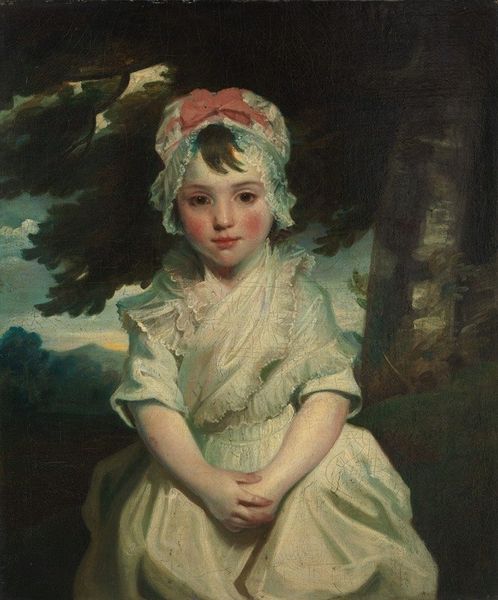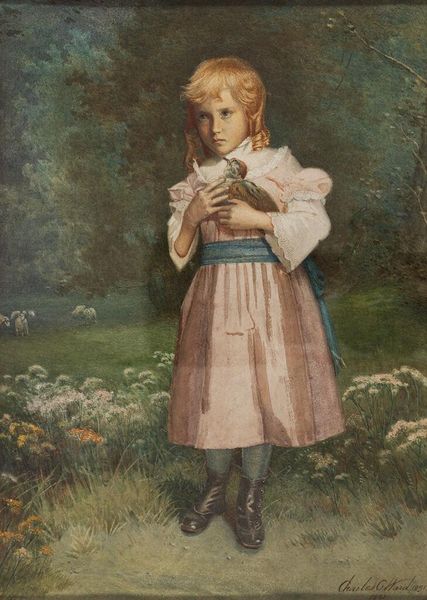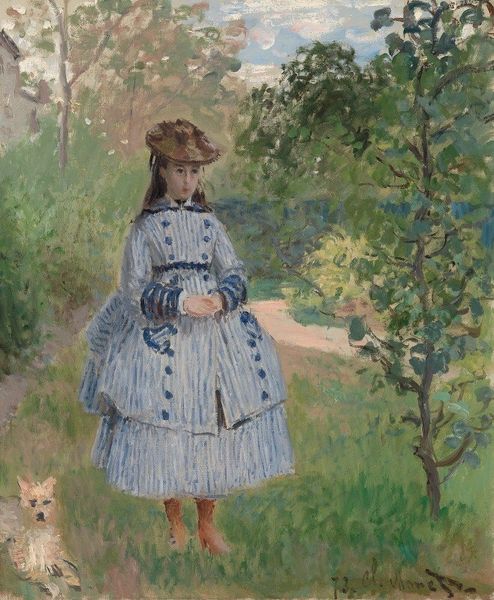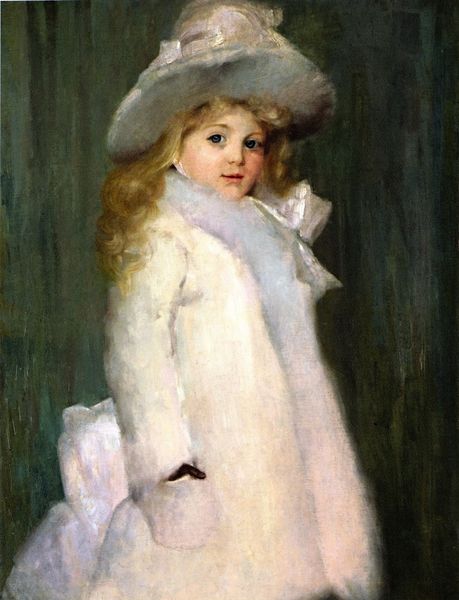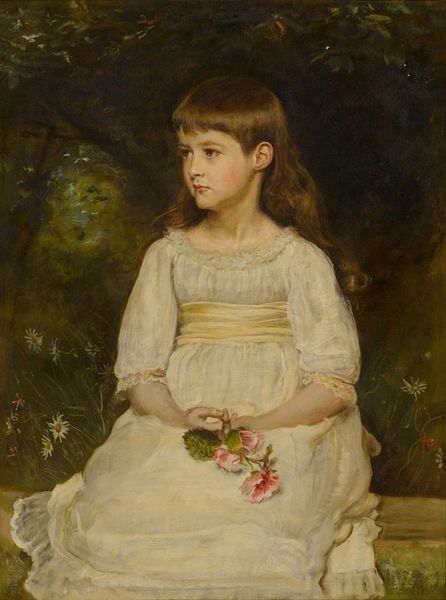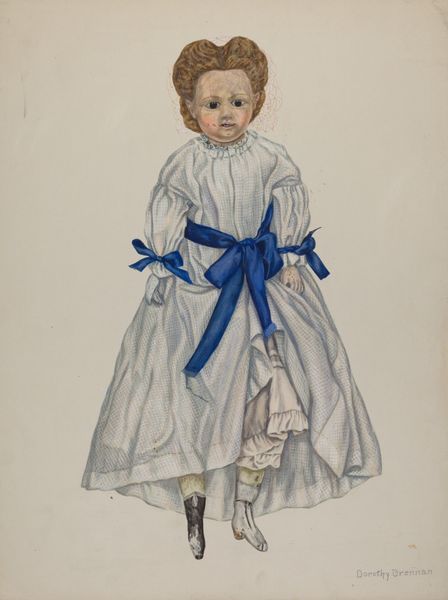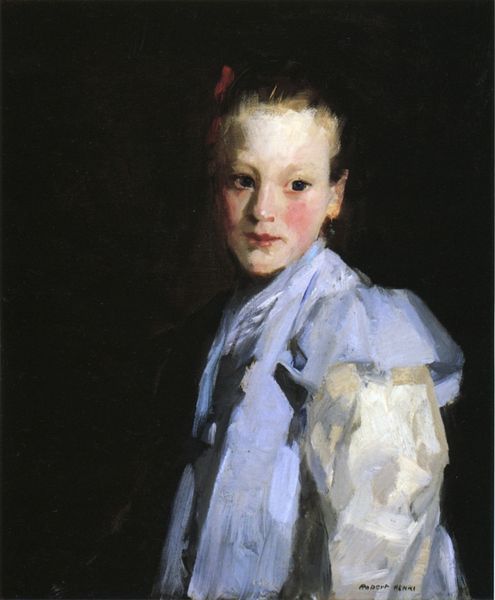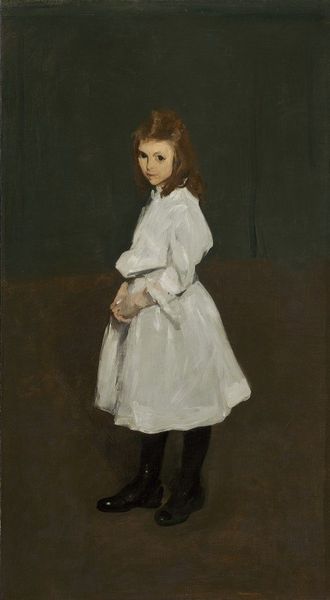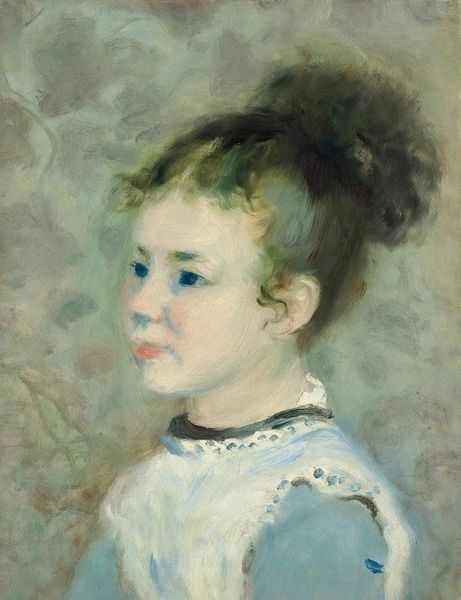
watercolor
#
portrait
#
impressionism
#
landscape
#
oil painting
#
watercolor
#
portrait drawing
#
watercolour illustration
#
genre-painting
#
watercolor
Dimensions: height 34 cm, width 21 cm
Copyright: Rijks Museum: Open Domain
Curator: Before us stands "Elisabeth Mauve (b. 1875), Daughter of the Artist," rendered between 1875 and 1888 by Anton Mauve. What are your initial thoughts? Editor: It strikes me as very understated, almost melancholy. The subdued palette, the young girl's downward gaze… it’s evocative, but muted. And that pathway she’s standing on, with how little color is included to mark its path. It's as if it almost ceases to exist. Curator: Indeed. Considering the late 19th-century context, we can view this genre painting as subtly commenting on the restricted roles assigned to young girls during that era. Her posture, the averted gaze – these signal a sense of confinement, don't you think? Editor: Perhaps. But look at the materiality; the loose, visible brushstrokes of the watercolor suggest spontaneity and an active engagement with the world. And the care taken in painting her dress shows something about the means by which she existed within the confines of that era. Curator: The dress also functions to infantilize her further, especially considering she has probably already been assigned domestic responsibilities. Her connection with those wildflowers provides an innocent contrast to the complex web of socio-political constraints placed on women and girls at the time. Her hat could signal some measure of status, however. Editor: I see your point about the flower as a symbol. At the same time, one must understand its very materiality. Consider what resources had to be in place for Mauve to create something so delicate in execution. And how readily available those materials would have been for those living and working in the urban landscape during this time. Curator: Absolutely. It speaks to the inherent dichotomy present between bourgeois artistic freedom and those facing socioeconomic deprivation. This brings to light discussions about how images function as cultural and economic markers. Editor: Exactly. Art isn't just a mirror reflecting reality; it's a material product shaped by production methods and consumed by a specific audience. Curator: Considering these factors allows us to see "Elisabeth Mauve" as a locus for multifaceted narratives that transcend its apparent simplicity. Editor: It prompts reflections on how economic factors impact perception of both the artistic subject, and artistic production itself. A truly thought-provoking piece when examined through its creation and context.
Comments
No comments
Be the first to comment and join the conversation on the ultimate creative platform.
